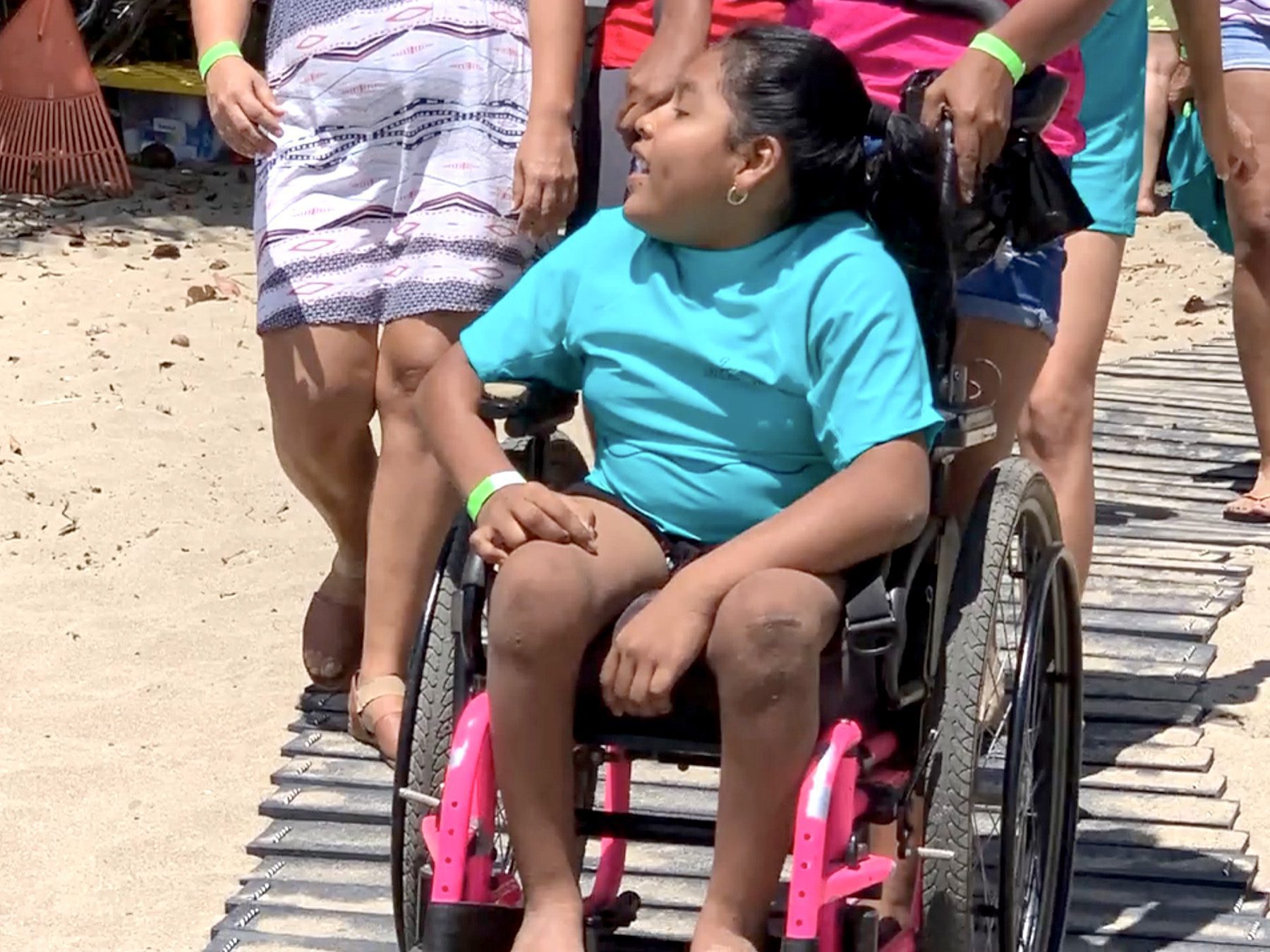ProParques Strives for
Inclusive Access to Enjoy Nature
Have you ever tried to push a wheelchair through the sand? No, I have not either, but just the idea of it is exhausting to me. That is why you have likely never seen wheelchairs at the beach. It is exactly the type of problem ProParques thinks about … and solves. It is why several of Costa Rica’s national parks in recent years have been enhanced with universal access trails giving wheelchair users unprecedented exposure to nature.
ProParques has taken this to an extraordinary new level in Cahuita National Park, one of the country’s most exquisite oceanside gems on the Caribbean coast. The goal of this project was to provide safe and easy beach access to visitors with disabilities.
A multi-pronged game plan took shape, starting with the right location. Playa Blanca, Cahuita was chosen because it’s the only national park in Costa Rica that has a co-management agreement with the local community. This standing relationship makes the locals key volunteers in both the building and daily upkeep stages of the project, ensuring long-term service and success.
Building an access path from the road to the beach might initially seem like a simple enough endeavor. But there were logistical obstacles to overcome, and several challenging legal requirements.
The design had to conform to Costa Rica maritime laws, which prohibit any permanent structures built within 50 meters of the high tide line. This mandated that the structure had to be set up every morning and taken down every evening. So it had to be lightweight and portable, which is no small task for 100 meters or so of walkway.
Brainstorming produced the ultimate solution — construct the pathway in multiple sections that could be easily rolled up and stored overnight. This necessitated that the sections — each measuring 250 by 120 centimeters — be strong, lightweight and long lasting. Hard plastic was the obvious choice. A campaign was conceived for collecting as many hard plastic caps from soft drink bottles and toothpaste tubes as possible. Then that plastic material would be used to fabricate the sections.
And why not clean up the environment at the same time? To do that, in typical ProParques fashion, a call went out beseeching Facebook, schools around the country, standing corporate partners and countless volunteers to spread the word and help with the collection of plastic bottle caps.
‘What’s the point of getting them to the edge of the water when they can’t go in?’
Plastic cap deluge
The response was overwhelming! ProParques’ offices were inundated with bags bulging with plastic caps for months.
The organization’s project director, Stephanie Joseph, has constant reminders of how successful the collection appeal was. When interviewed recently, she told me, “I am still finding those caps in my car, in my house, my desk — everywhere!”
So, after weeks of scheming, planning and recruiting, everyone involved with the Cahuita beach access project had all they needed to start the walkway’s innovative manufacturing process.
But that wasn’t all it would take to finish the project. According to Rocio Echeverri, executive director of ProParques, park visitors needed more to fully experience the beautiful beach.
“What’s the point of getting them to the edge of the water when they can’t go in? We needed to complete the project all the way.”
So, an astounding $5,000 of the project budget was set aside to purchase a specialized aquatic chair, designed for the disabled to safely “go for a swim,” something most beachgoers take for granted.
Although the added expense may seem stunning, it made all the other project elements more relevant — the volunteers, the surrounding community involvement, the government participation, and of course, the funding.
The outcome of all these efforts can be seen by clicking the video link on this page. But have a tissue handy and be warned — it will make you cry.






